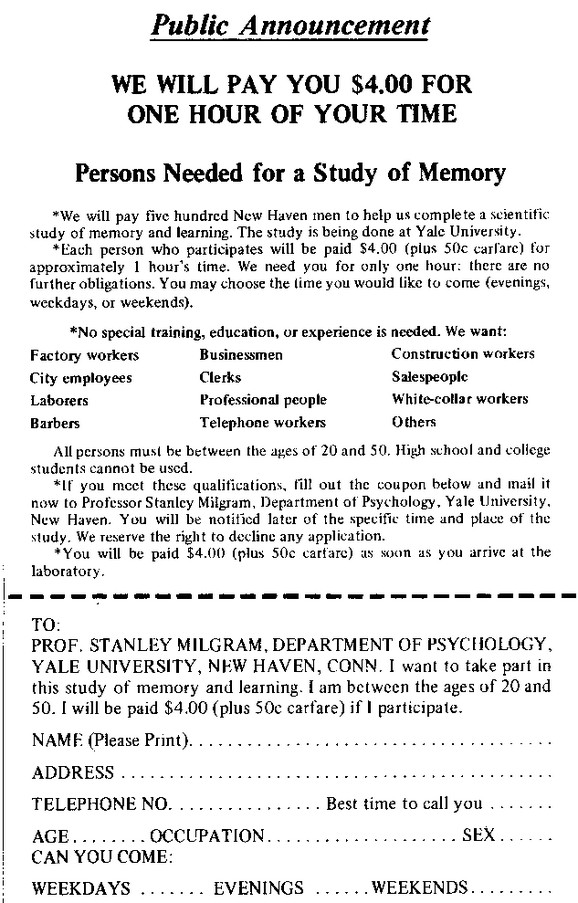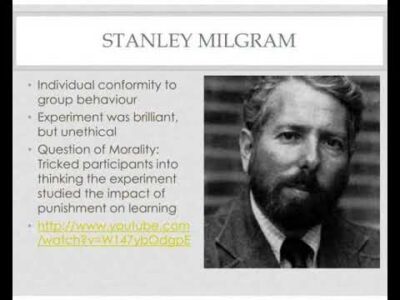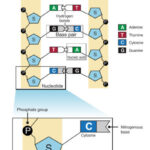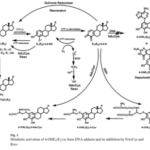October 5, 2024 Scientific alternative studies, Totalitarianism
Ordinary people, simply doing their jobs, without particular hostility, can become agents of terrible destruction.
Stanley Milgram’s Principle of Obedience and its shocking results
November 8, 2021
It is well known that during the Nuremberg Trials, the answer given by the Nazis on the witness stand for the atrocities they had committed was always the same :
“I was only following orders !”
An answer – in some ways unexpected – that prompted the famous American psychologist Stanley Milgram to investigate whether the German people were “different” from others.
The results of Stanley Milgram’s experiments at that time (1963) were nothing less than shocking to the whole world.
And they were later published and commented on in detail in his most famous work: “Obedience to Authority”.
I mention this because it is exactly what we are experiencing at this time.
There are indeed some who follow the “orders” of the mass media without thinking about motives.
Others, however, rail and violently attack those who do not “follow orders” and simply wish to remain free (e.g., do not wish to wear the “symbol of oppression” all the time).
In short, also and especially thanks to Stanley Milgram’s studies, one can immediately and without any effort identify all the “sheep” who obey the authorities whatever they are told.
And at the same time alienate from society all the so-called “dissidents”.
Who will end up living in isolation from the rest of the “normal” world.
In detail, here is Stanley Milgram’s experiment and especially its shocking results.
In 1961 Stanley Milgram was a researcher at Yale University.
His studies at the time focused on the subject of obedience.
Stanley believed that in modern society the presence of authority is indispensable.
From which only those who live in total isolation can escape.
History also suggests that obedience can cause people to behave in certain ways.
Beyond ethical beliefs, feelings of closeness to one’s neighbor, or (one’s own) moral behavior.
In this regard, Charles Percy Snow wrote in 1961 :
“When one thinks of the long and dark history of man, one finds that more terrible crimes have been committed in the name of obedience than in the name of rebellion.
Milgram’s study

Based on all of the above, Stanley Milgram decided to test the human tendency to obey by administering electric shocks to a victim.
He then created a dummy electric generator with 30 possible voltages, ranging from 15 to 450 volts.
The “victim” was a collaborator of the scientist (a semi-professional actor, an accountant by profession) who simulated different reactions depending on the induced voltage.
The shocks were gradually increased in intensity on the instructions of Stanley Milgram.
Up to the point of reaching voltage levels indicated on the device as highly dangerous.
The moment the subject refused to continue with the administration of the electric shocks was referred to as an “act of disobedience”.
At that point, the experiment ended.
Each participant was given a score.
The higher the voltage reached before the so-called “act of disobedience”, the higher the score.
The goal of the study was fairly obvious.
To identify and weigh the relevant factors in determining whether or not subjects were obedient during the experiment.
The variables that Stanley Milgram manipulated were :
The source from which the command to operate the generator came.
The content and form of the order.
The instruments used to carry out the command
Approximately 40 “normal” people (taken “literally from the street,” as Stanley Milgram himself later pointed out) between the ages of 20 and 50 were recruited.
These “guinea pigs” were convinced that they were participating in a study of a different kind: memory and learning.
And then to investigate the role of “punishment” in the case of results considered “unsatisfactory”.
One person had to pretend to be a teacher.
The other, on the other hand, was a student who had to “receive the punishment”.
The experimenting teacher was played by a biology professor in his mid-30s.
The so-called “victim” was a middle-aged man (the “actor” was an accountant) who was well trained for the role.
The 40 participants were told that the role of the punisher would be chosen by lottery.
Therefore, in every situation, they always found themselves together with the accountant.
The accountant pretended to be a participant in the experiment.
But the lottery was controlled.
All the recruited people – who always picked the card first – always ended up being the teacher.
And the accountant always played the role of the “victim”.
Of course, the same word was always written on both cards: “Teacher”.
In an adjacent room, the accountant was made to stand on a mock electric chair.
In addition, he was shackled – as in a real electric chair – to make it appear that he could not make sudden and unconscious movements during the electric shocks.
Finally, electrodes were attached.
Before the experiment began, the “undercover biology professor” reassured the unsuspecting participants :
“Although the shocks may be extremely painful, they will not cause any permanent damage”.
All participants – before the experiment began – were made to experience a 45 volt shock.
This was to make them understand that the experiment would actually take place within the described canons.
The tasks, presented in increasing order of difficulty, were related to learning certain words.
Before operating the generator, it was explained that the subjects first had to tell the “victim” the chosen voltage.
During the test, the experimenter instructed the subjects to start with discharges of 15 volts.
Then, with each incorrect answer, the voltage was gradually increased.
When 300 volts was reached, a gunshot was heard from the adjacent room where the “victim” (the accountant) was standing.
From that point on, the victim would not respond to the subjects’ questions.
Throughout the study, the subjects would constantly ask the fake experimenter how to behave.
Of course, in case of any doubt, Stanley Milgram had prepared a set of ready-made answers to every possible question the “teachers” might ask :
“Please proceed”.
“The experiment requires that you continue”.
“It is absolutely necessary that she continue”.
“You have no choice, you must continue”.
The first variable the experiment wanted to shed light on was the maximum voltage level the teachers could reach.
This was followed by measuring the latency and duration of the shocks.
Throughout the experiment, Stanley Milgram’s assistants noted the behavior of the subjects.
They interviewed them and asked their opinions at the end of the experiment.
Finally, the teacher and the victim were brought together, trying to create a sufficiently peaceful atmosphere between the two parties at the end.
The results of the study

Before presenting the results, Stanley Milgram revealed a very important detail.
He had asked 14 Yale University psychology professors to “predict” the behavior of the subjects involved in the research.
In their opinion, only 1.2 percent of the subjects would agree to go through with the experiment, even to the point of administering the most painful shock.
At the end of the experiment, the subjects said they were aware that they had caused the victim extremely painful shocks (13.42 on a scale of 1 to 14).
Some of them were sweating, shaking, stuttering, biting their lips and moaning.
Almost all of them laughed out of nervousness.
Some of them had convulsions.
And in one case, the experiment ended unfinished.
Analyzing the distribution of “acts of disobedience,” Stanley Milgram found that only five subjects had stopped at the moment of the 300-volt shock.
That is, when they stopped receiving signals from the room where the “victim” was.
Others had stopped at a slightly higher voltage.
But as many as 26 people went to the maximum voltage, and then up to 450 volts.
Recordings made at the time of the experiment now allow us to know the opinions of those who had stopped before the end of the experiment :
“I think he’s trying to communicate, I can hear him banging on the floor… “
“It’s not right to shock the boy…those are extreme voltages. I don’t think he’s human…”
“Oh, I can’t go on, no, it’s not right. It’s a nightmare of an experiment. This person is suffering. I don’t want to go on. This is crazy”.
Discussion of results
In his article Stanley Milgram drew attention to two key points.
The first was the extreme tendency toward obedience shown.
As many as 26 people (out of 40) had acted against their own moral rules to follow the experimenter’s dictates.
Sure, she was a very authoritative source.
But it also lacked any means of coercion to enforce its dictates.
Disobedience would not be punished.
And despite the misgivings and negative judgments about the experiment, 65 percent of the people did it anyway.
A very high number indeed.
A second completely unexpected result was the behavior of the “experimenters.
Stanley Milgram certainly expected a highly stressful situation.
But he had not imagined that the subjects would accept such highly dangerous demands on the health of the “victim.
In an attempt to understand the results of this incredible experiment, Stanley Milgram later identified the key points that had led to the level of obedience found.
The authority and reputation of the institution to which the study was directed (Yale University).
The (theoretically noble) purpose for which the act of obedience was necessary: the possible development of new knowledge about learning.The voluntariness of the “victim” in submitting to the experiment.
The voluntary nature of the subject’s participation in the research. A fact that made him practically obliged to follow the experimenter, since he himself had agreed to participate.Certain details of the procedure, such as the fact that the participants had received a good amount of money just for coming to the laboratory.
The randomness of the assignment of the roles of teacher and victim, and thus the equal acceptance of risk.The lack of information about the limitations of the researcher, both in terms of the methods used and the field of study.
Confidence that no permanent damage would be done.The reactions of the victim, which could have been a sign of willingness to participate (at least up to 300 volts).
The need to give a response to the experimenter (continue) or the victim (stop) as the only way out, with no opportunity for the subject to find a mutually acceptable solution.The scientific authority of the experimenter’s request.
The lack of time to consider a more appropriate choice.The internal conflict resulting from the forced choice between two moral principles : the desire not to harm one’s neighbor and the tendency to obey authority.
It is at this point that it becomes clear how tyranny is imposed not only by the ignorance or incompetence of the people.
But simply by identifying a “credible” source.
It is enough to disguise cruel acts as “virtuous” gestures.
In this way, any “certified” authority can justify the oppression of other individuals “for the common good.
Over the years, the results of Stanley’s experiments have been heavily criticized by the mass media.
Of course, as always happens in such cases, despite the irrefutable evidence provided by his experiments, the scientific community (and, of course, the mainstream) pretended to reject any validity of his “conditioning theory.
The reason, of course, was not to admit to the public that the majority of the population (65 percent) is nothing more than a mass of sheep obedient to an authority that can then maneuver them at will.
In this way, all those responsible (directly and indirectly) for all the worst crimes in history can be “justified”.
Including the heinous attempt to destroy humanity that we are currently witnessing.
This is precisely why the common responses of National Socialists, from hierarchs to ordinary citizens, were :
“I was only following orders !”
Why such a situation is possible from a scientific point of view is still a mystery.
But we know very well how it is possible.
Just look at what is happening around us.
Therefore, it is completely useless to try to convince the so-called “sheep”.
Fifty years of sowing seeds by the usual well-known friends of the “Club” have unfortunately been enough to get their way.
Now they can move on to “cashing in”.
Of course, Stanley Milgram – perhaps the greatest psychologist in history – never had much success in his lifetime.
Despite the excellent results he obtained in many other experiments designed to further study the behavior of individuals in their natural life contexts.
“Strangely enough”, his theories only began to be accepted after his death in New York City on December 20, 1984, at the age of only 51.
Oddly enough, the same year as George Orwell’s famous book.














